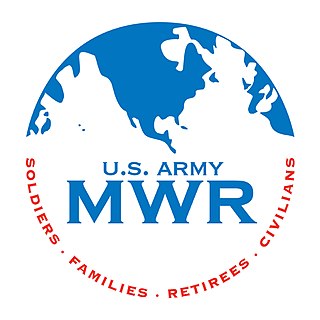Industrial and organizational psychology "focuses the lens of psychological science on a key aspect of human life, namely, their work lives. In general, the goals of I-O psychology are to better understand and optimize the effectiveness, health, and well-being of both individuals and organizations." It is an applied discipline within psychology and is an international profession. I-O psychology is also known as occupational psychology in the United Kingdom, organisational psychology in Australia and New Zealand, and work and organizational (WO) psychology throughout Europe and Brazil. Industrial, work, and organizational (IWO) psychology is the broader, more global term for the science and profession.
Occupational therapists (OTs) are health care professionals specializing in occupational therapy and occupational science. OTs and occupational therapy assistants (OTAs) use scientific bases and a holistic perspective to promote a person's ability to fulfill their daily routines and roles. OTs have training in the physical, psychological, and social aspects of human functioning deriving from an education grounded in anatomical and physiological concepts, and psychological perspectives. They enable individuals across the lifespan by optimizing their abilities to perform activities that are meaningful to them ("occupations"). Human occupations include activities of daily living, work/vocation, play, education, leisure, rest and sleep, and social participation.

Training is teaching, or developing in oneself or others, any skills and knowledge or fitness that relate to specific useful competencies. Training has specific goals of improving one's capability, capacity, productivity and performance. It forms the core of apprenticeships and provides the backbone of content at institutes of technology. In addition to the basic training required for a trade, occupation or profession, training may continue beyond initial competence to maintain, upgrade and update skills throughout working life. People within some professions and occupations may refer to this sort of training as professional development. Training also refers to the development of physical fitness related to a specific competence, such as sport, martial arts, military applications and some other occupations.

Military recruit training, commonly known as basic training or boot camp, refers to the initial instruction of new military personnel. It is a physically and psychologically intensive process, which resocializes its subjects for the unique demands of military employment.

The Ranger School is a 62-day United States Army small unit tactics and leadership course that develops functional skills directly related to units whose mission is to engage the enemy in close combat and direct fire battles. Ranger training was established in September 1950 at Fort Benning, Georgia. The Ranger course has changed little since its inception. Until recently, it was an eight-week course divided into three phases. The course is now 61 days in duration and divided into three phases as follows: Benning Phase, Mountain Phase, and Swamp Phase.

Military education and training is a process which intends to establish and improve the capabilities of military personnel in their respective roles. Military training may be voluntary or compulsory duty. It begins with recruit training, proceeds to education and training specific to military roles, and sometimes includes additional training during a military career. Directing staff are the military personnel who comprise the instructional staff at a military training institution.
Psychological resilience is the ability to cope mentally and emotionally with a crisis, or to return to pre-crisis status quickly.

Psychiatric and mental health nurses in the U.S. Army Nurse Corps employing groundbreaking protocols and treatments in psychiatric issues to address the unique challenges that our service men and women face, more commonly post-traumatic stress disorder and traumatic brain injuries. Most people understand that trauma exposure is a popular occupational hazard for military members. Psychiatric screenings, before and during their enlistment, and treatments after being exposed to warfare, death, destruction, and torture have been extremely beneficial for military personnel and their dependents.

The United States Army Armor School is a military training school located at Fort Moore, Georgia. Its primary focus is the training of United States Army soldiers, non-commissioned officers, warrant officers, and commissioned officers. It also trains for equipment handling, including the M1 Abrams, the Bradley Fighting Vehicle, and the Stryker Mobile Gun System. The Armor School moved to Fort Benning in 2010 as part of the United States Base Realignment and Closure program.

The Madigan Army Medical Center, located on Joint Base Lewis-McChord just outside Lakewood, Washington, is a key component of the Madigan Healthcare System and one of the largest military hospitals on the West Coast of the United States.

The Leadership Development and Assessment Course is the centerpiece of the US Army's Reserve Officers' Training Corps (ROTC) program. Since the 1950s, the Army has called it "Advanced Camp"; it is currently known as "Warrior Forge". It is conducted during June, July, and August at Fort Knox, Kentucky. The course is normally attended by cadets between their junior and senior years of college, although the last rotation consists of soldiers in the Officer Candidate School as well as military junior colleges.

United States Army Basic Combat Training (BCT) is the recruit training program of the United States Army, for service in the U.S. Army, U.S. Army Reserve, or the Army National Guard.

Military psychology is a specialization within psychology that applies psychological science to promote the readiness of military members, organizations, and operations. Military psychologists provide support to the military in many ways, including through direct clinical care, consultation to military commanders, teaching others and supporting military training, and through research relevant to military operations and personnel. Military psychology as a field has been growing since the early 20th century, evidence that the demands and needs for psychological clinical and operational application is continuing to grow steadily. There are many stressors associated with military service, including exposure to high-risk training and combat. As such, psychologists are critical support components that assist military leaders in designing appropriate training programs, providing oversight to those programs, and assisting military members as they navigate the challenges of military training and their new lifestyle. Military psychology covers a wide range of fields throughout the military including operational, tactical, and occupational psychology. Gender differences between military-trained personnel who seek mental health assistance have been extensively studied. Specific examples include post traumatic stress disorder (PTSD) associated with combat, or guilt and family/partner difficulties accompanying extended or frequent deployments due to separation. Clinical providers in military psychology are often focused on the treatment of stress, fatigue, and other personal readiness issues. Previous wars such as the Korean war, Vietnam war, and WW 2 provide great insight to the workings and practices of military psychology and how the practices have changed and assisted the military over the years.

The Department of Physical Education is the academic department that oversees the physical development program at the United States Military Academy at West Point, New York. DPE is headquartered in the Arvin Cadet Physical Development Center. DPE has 24 Military faculty and 25 civilian instructors and professors. The head of the department holds the ceremonial title of Master of the Sword, known within the department as the MOS. This title dates back to when the Cadets at West Point were taught swordsmanship as part of their military and physical training. The current Master of the Sword is COL Nicholas Gist, who has held the position since 2015. The department's stated mission is:
The Department of Physical Education develops warrior leaders of character who are physically and mentally tough by engaging cadets in activities that promote and enhance a healthy lifestyle, physical fitness, movement behavior, and psychomotor performance.
Sport psychology was defined by the European Federation of Sport Psychology (FEPSAC) in 1996, as the study of the psychological basis, processes, and effects of sport. Otherwise, sport is considered as any physical activity where the individuals engage for competition and health. Sport psychology is recognized as an interdisciplinary science that draws on knowledge from many related fields including biomechanics, physiology, kinesiology and psychology. It involves the study of how psychological factors affect performance and how participation in sport and exercise affect psychological and physical factors. Sport psychologists teach cognitive and behavioral strategies to athletes in order to improve their experience and performance in sports.

Basic Training in the United States Army is the initial training for new military personnel typified by intense physical activity, psychological stress and the development of social cohesion. The United States Army Center for Initial Military Training (USACIMT) was created in 2009 under the U.S. Army Training and Doctrine Command to oversee training related issues.

The United States Army's Family and Morale, Welfare and Recreation (MWR) Programs are executed within the Installation Management Command G9, Family and MWR Directorate, following the deactivation of the Family and Morale, Welfare and Recreation Command on 3 June 2011 in a ceremony at Fort Sam Houston. According to the organization's official mission statement, IMCOM G9 delivers "quality Family and Morale, Welfare, and Recreation programs and services supporting the readiness and resilience of the All-Volunteer Army."
Basic Military Officer Qualification refers to both the basic training course, and the graduation qualification, received by individuals seeking entry as officers to the Canadian Forces. The course is conducted at Canadian Forces Leadership and Recruit School in Saint-Jean, Quebec and is 12 weeks long.
An important part of the heritage of family resilience is the concept of individual psychological resilience which originates from work with children focusing on what helped them become resilient in the face of adversity. Individual resilience emerged primarily in the field of developmental psychopathology as scholars sought to identify the characteristics of children that allowed them to function "OK" after adversity. Individual resilience gradually moved into understanding the processes associated with overcoming adversity, then into prevention and intervention and now focuses on examining how factors at multiple levels of the system and using interdisciplinary approaches promote resilience. Resilience also has origins to the field of positive psychology. The term resilience gradually changed definitions and meanings, from a personality trait to a dynamic process of families, individuals, and communities.

The Army Reserve Officer Training Corps (AROTC) is the United States Army component of the Reserve Officers' Training Corps. It is the largest Reserve Officer Training Corps (ROTC) program which is a group of college and university-based officer training programs for training commissioned officers for the United States Army and its reserves components: the Army Reserves and the Army National Guard. There are over 30,000 Army ROTC cadets enrolled in 274 ROTC programs at major universities throughout the United States. These schools are categorized as Military Colleges (MC), Military Junior Colleges (MJC) and Civilian Colleges (CC).














